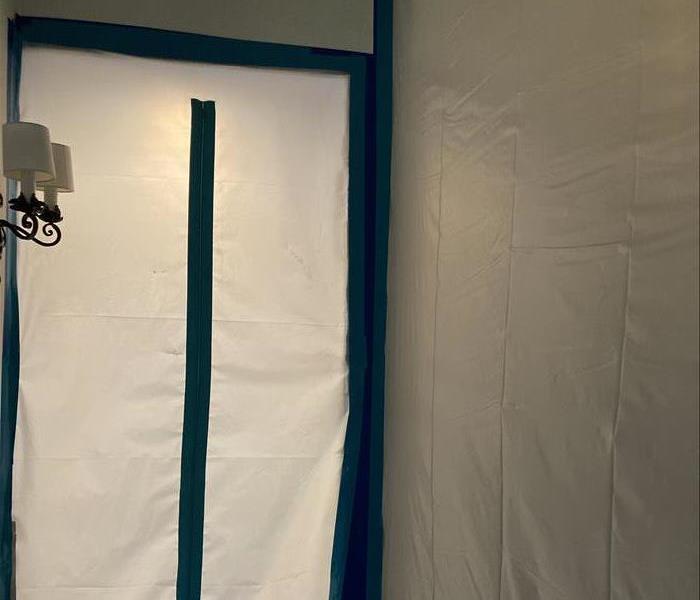How Water Damage and Mold Go Hand in Hand
3/15/2024 (Permalink)
 Understanding this dynamic duo is key to addressing water damage promptly and mitigating the risk of mold growth in your home.
Understanding this dynamic duo is key to addressing water damage promptly and mitigating the risk of mold growth in your home.
Water damage in residential settings is more than just an inconvenience; it often brings an unwelcome companion — mold. In this blog, we'll delve into why residential water damage and mold seem to go hand in hand, shedding light on the interconnected issues that homeowners may face. Understanding this dynamic duo is key to addressing water damage promptly and mitigating the risk of mold growth in your home.
1. Moisture as the Catalyst
Water damage creates the ideal breeding ground for mold by introducing excess moisture into the equation. Whether it's a burst pipe, roof leak, or flooding, the lingering moisture becomes a catalyst for mold spores to thrive and multiply.
2. Timing is Everything
Mold is opportunistic and swift, often appearing within 24 to 48 hours after water damage occurs. The quick onset of mold growth highlights the urgency of addressing water damage quickly to prevent a potential mold infestation.
3. Hidden Havens for Mold
Water damage doesn't just affect visible surfaces; it can seep into hidden nooks and crannies, under flooring and behind walls, providing secluded areas for mold to grow. This makes it essential to thoroughly assess and address water damage to prevent mold from establishing hidden colonies.
4. Material Matters
Certain building materials, such as drywall and insulation, are particularly susceptible to water absorption. Once saturated, these materials become a breeding ground for mold. Understanding the materials in your home and their vulnerability to water damage is crucial in preventing mold issues.
5. Neglected Spaces
Areas that often go unnoticed, like basements, crawl spaces, and attics, are more susceptible to water damage and subsequent mold growth. Regular inspections of these neglected spaces can help identify and address water damage before mold has a chance to take hold.
6. Humidity Amplifies Mold Risk
After water damage occurs, the residual humidity in the air can further amplify the risk of mold growth. Adequate ventilation and dehumidification are essential in reducing humidity levels and mitigating the potential for mold infestation.
7. DIY Cleanup Risks
While DIY water damage cleanup may seem cost-effective, improper drying and cleaning techniques can leave lingering moisture, setting the stage for mold growth. Professional water damage restoration services ensure thorough and effective cleanup, minimizing the risk of subsequent mold issues.
8. Continuous Monitoring
Even after water damage is addressed, continuous monitoring is crucial. Regular checks for signs of mold growth, such as musty odors or visible patches, can help catch potential issues early and prevent widespread infestation.
Understanding the relationship between residential water damage and mold empowers homeowners to take proactive steps to protect their homes. Prompt attention to water damage, thorough cleanup, and ongoing monitoring are key elements in breaking the cycle and maintaining a mold-free living environment.






 24/7 Emergency Service
24/7 Emergency Service